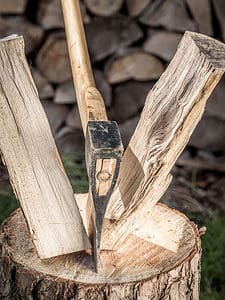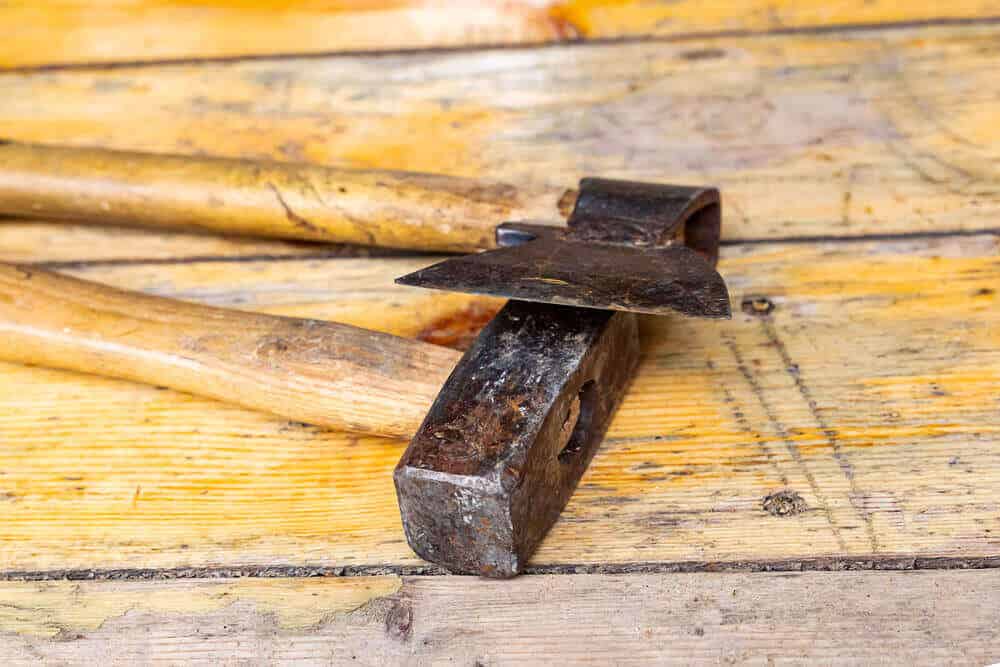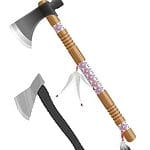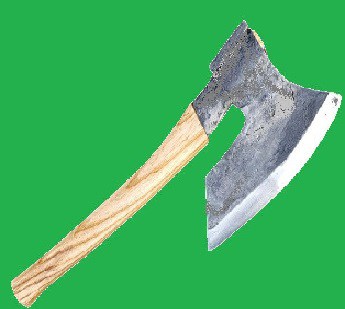A maul and an axe share some similarities, but there are also some critical differences between the two. Both are tools used for chopping wood and splitting logs, but their design, composition, and use make them very different in practice.
Table of Contents
Anatomy Of A Maul And An Axe
Splitting mauls have long handles that range from 28 to 36 inches long. The head of the maul is wider at the bottom, which gives it extra weight for increased momentum when swinging or thrusting into logs. Typically, mauls have metal heads with steel or iron blades that are tempered, heat-treated, or even handmade and weigh in the range of 6 to 12 pounds. A splitting axe has a lighter head than a maul; most weigh 1 ½ to 6 pounds, with a steel blade on one side of its head and either a flat hammer surface or another blade on the other.
The primary difference in the blade shape between an axe and a maul is that an axe typically has a more pointed profile, while a maul typically has a broader, flatter edge. An axe blade is often sharpened to create a thin slicing-edge which helps it cut through wood quickly and easily whereas a maul’s wide edge gives it more power to split thick logs or hew large pieces of wood than an axe would have. In addition, the wider surface area makes it easier for the user to get leverage when driving the maul into the wood.
Maul handles are usually longer than those found on axes and provide more leverage when striking the wood. On the other hand, an axe has a much shorter and studier handle than a maul, typically 16 to 22 inches long, which helps users control their actions better, which makes axes better suited for tasks like chopping up kindling or small branches. You will also find that an axe handle is typically curved to provide better control while swinging, while a maul’s handle is usually straight to maximize power from each blow.

Use Cases For An Axe And Maul
The primary purpose of both tools is splitting wood, and a maul excels at splitting thicker pieces due to its heavier head, while an axe is best suited for smaller pieces because it’s easier to wield with precision. Mauls are especially effective when driving wooden wedges into logs as well.
Axes can be used to fell trees or perform large scale limbing operations, which is not something you would want to do with a maul due to size and shape. Remember that modern chainsaws have recently replaced axes and mauls for timber-felling operations due to their convenience and speed in large scale production operations.
Here is a quick snapshot of the best use case for mauls and axes:
- A maul is best used for: driving wedges, splitting logs into small chunks
- An axe is best used for: felling trees, chopping kindling and small branches.

Safety Considerations
Basic safety rules must be considered when using tools like an axe or maul, including wearing personal protective equipment such as goggles and gloves when necessary. Also, inspect the axe or maul before use for signs of wear and loose components.
Carefully check your surroundings before striking anything around you and do not throw your axe or maul to the side when you have completed your task, as you could cause harm or damage to anyone or anything else, yourself included.
Use your axe or maul responsibly, and place the handle upright, leaning against an object, so it is visible when taking a break. Lastly, wipe the axe or maul off and clean the head and handle before hanging up.
Final Thoughts
An axe and a maul are essential tools for chopping and splitting wood. While some applications overlap, each tool has its own distinct characteristics that should be considered depending on the job at hand.
An axe tends to be more versatile as you can use them for finer tasks such as shaping wood, whereas mauls excel at splitting larger logs into halves or thirds. Though an axe and maul are not created equal, each one has a distinct advantage over the other depending upon what specific job needs doing. Now you know the differences between a maul and an axe, take a look at our guide Axes vs. Hatchets – Which Is Better?






